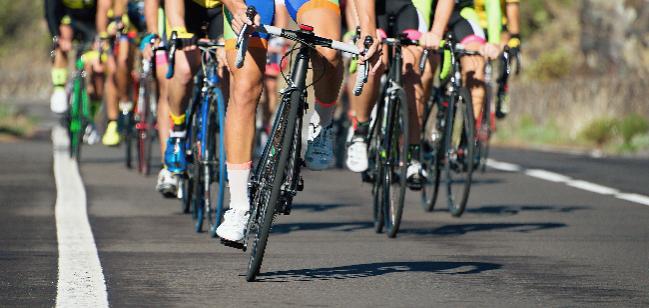Athletes With ICDs May Still Compete, Study Reassures
The good news, researchers say, is that long-term data show most patients with ICDs can safely continue playing sports.

In most instances, athletes with an implantable cardioverter-defibrillator (ICD) may continue to play competitively over the years, new observational data suggest.
“For many of these patients with ICDs, it is in fact safe to participate in sports if that’s what they want to do,” lead author Rachel Lampert, MD (Yale University School of Medicine, New Haven, CT), told TCTMD, adding, “[That] doesn’t mean that every single patient with an ICD should be out there doing every possible sport.”
Each month, 10,000 people receive an ICD in the United States, the American Heart Association reported in 2012. Although these devices are common, questions remain as to which activities are safe for the patients who have them. Up until 2015, clinicians were admonished not to allow patients with ICDs to participate in sports more intense than golf. There were concerns about the potential for death if the defibrillator didn’t shock the patient when necessary, what might happen if the device broke, and possible injuries from potential shocks. But perceptions began to shift in 2013 after a 2-year study found that none of these concerns came to fruition when athletes with ICDs competed.
The new analysis, published as a research letter yesterday in Circulation, is an expansion of that 2013 study and lengthens the follow-up period to nearly 4 years.
“So what we are finding is that none of these bad events happened,” said Lampert. “Basically, no one had a failure to defibrillate, there were no deaths related to this and there were no failures to defibrillate, no resuscitated arrests, and no injuries related to doing sports with the ICD.
One in 10 Patients Had Appropriate Shocks
Lampert et al analyzed 440 people (ages 10-60 years), of whom 393 took part in organized sports and 47 participated in high-risk sports, ranging from basketball to soccer to running. The most common indications for the ICDs, which had been in place for a median of 26 months at the time of enrollment, were QT syndrome (20%), hypertophic cardiomyopathy (17%), and arrhythmogenic right ventricular cardiomyopathy (ARVC; 13%).
As in the 2013 study, 10% of people received appropriate shocks for ventricular fibrillation and tachycardia while engaging in sport. Participants were more likely to be shocked during physical activity than during rest (20% vs 10%; P < 0.0001), with similar shock rates for those who were competing and practicing versus those who were doing some other form of physical activity (12% vs 10%; P = 0.56). Appropriate shocks were more common during competition/practice or other physical activity than in times when the athletes were at rest (11% vs 6%; P = 0.005).
People with ARVC were outliers when it came to being appropriately shocked while playing sports. “Patients with ARVC were more likely than others to experience life-threatening ventricular arrhythmias requiring shock during sports, and more likely to require multiple shocks to terminate their arrhythmias during physical activity,” Lampert said in a press release. “While all the shocks were ultimately successful in this study, this raises concern that vigorous physical activity could lead to arrhythmias that would not be terminated by the device. Although the ICD did work eventually and got the ARVC patients out of the arrhythmias, we don’t like to see people requiring multiple shocks.”
ICDs Not Foolproof
Of note, the study also showed 31 proven and 13 potential lead malfunctions.
Stressing that he’s not an electrophysiologist, Paul D. Thompson, MD (Hartford Hospital, Hartford, CT), who commented on the study for TCTMD, noted that one concerning aspect of the findings was that these lead problems affected nearly 10% of the people with ICDs. In other words, he said, “There were 44 people that had a problem [out] of the 440. That is not a small number of people.”
Lampert, who is an electrophysiologist, said that these numbers are not in fact that high compared with evidence in the literature on natural malfunction rates over 5 or 10 years.
Yet some worries remain. Considering the nature of these sports, there are still concerns about possible damage to the defibrillator, Lampert noted. “We had a handful of [participants in] ice hockey, rugby, football, where really there is a lot of violent contact,” she said, noting that it’s possibly that someone playing these sorts of sports might have a higher risk of damaging the ICD itself.
Moreover, Thompson said that there may be selection bias at play. “These are obviously selected patients. [A clinician] somewhere probably allowed these athletes to participate” and didn’t definitively say no, he explained. Also, it was not a randomized clinical trial; instead, these were people whose doctors allowed them to enter into the study knowing they “could exercise with an ICD in place,” Thompson added.
Thompson hopes future studies will focus on different aspects of the patient population with ICDs. “You take a 1,000 people who have ICDs, 500 are told, ‘Do what you want, go exercise, go compete, have a good time.’ And 500 are told, ‘You can walk, you ride a stationary cycle, you can’t get your heart rate above such and such, you go have a good time, too.’ That’s what we really need,” he suggested.
In the meantime, Lampert and colleagues say their findings can help lead to individualized physician and patient decision-making about sports participation for athletes with ICDs.
Ashley Lyles is the 2017 recipient of the Jason Kahn Fellowship in Medical Journalism. She is currently a graduate student…
Read Full BioSources
Lampert R, Olshansky B, Heidbuchel H, et al. Safety of sports for athletes with implantable cardioverter defibrillators: long-term results of a prospective multinational registry. Circulation. 2017;135:2310-2312.
Disclosures
- Lampert reports receiving consulting fees/honoraria from Medtronic and research grants from Boston Scientific, Medtronic, and St. Jude Medical.
- Thompson reports owning a small amount of Medtronic stock.


Comments